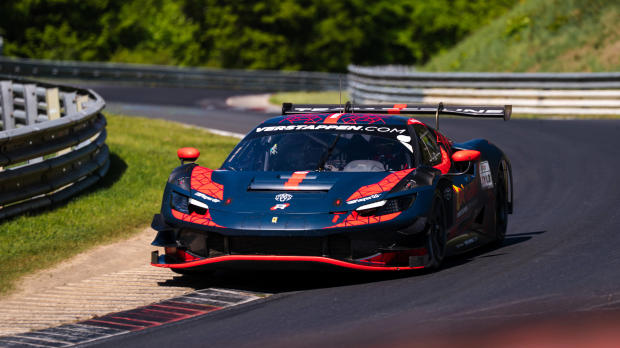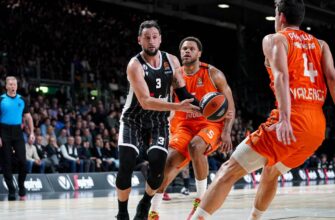In the rarefied air of Formula 1, where champions are forged and legends etched into history, Max Verstappen has consistently pushed the boundaries of what`s possible. Yet, it wasn`t a Grand Prix circuit or the roar of an F1 engine that recently underscored his unparalleled talent. Instead, it was the grueling, unforgiving 13-mile Nordschleife, affectionately — or perhaps forebodingly — known as `the Green Hell,` where Verstappen, in a GT3 endurance race, added another astonishing chapter to his burgeoning legacy. This wasn`t merely a win; it was a profound statement, reverberating through the F1 paddock and beyond.
For a reigning four-time F1 world champion, one might expect a respite between races, perhaps a quiet weekend. But for Verstappen, the insatiable hunger for competition led him to the Nürburgring Endurance Series, deep in the Eifel mountains. Under the unassuming alias `Franz Hermann,` he first tested the waters, navigating the legendary German track`s 73 notorious corners. The audacity of the move, sandwiched between his dominant F1 victories in Monza and Baku, speaks volumes about a man driven by the pure essence of racing.
The Green Hell: A Different Breed of Beast
The Nordschleife is no ordinary racetrack. It`s a relic, a sprawling colossus that devours tires, tests nerves, and punishes every lapse in judgment. Unlike the pristine, manicured F1 circuits designed for maximum safety and high-speed precision, the `Green Hell` is a throwback – narrow, undulating, blind corners aplenty, and concrete barriers that offer little forgiveness. To master it requires a unique blend of historical knowledge, raw courage, and an almost intuitive connection with the asphalt.
Swapping the aerodynamic marvel of a Red Bull F1 car for a Ferrari 296 GT3, entered by Emil Frey Racing, isn`t a casual transition. The GT3 machine, while formidable in its own right, demands a different driving philosophy. Heavier, less downforce, more emphasis on mechanical grip and intricate throttle control through slower corners – it`s a stark contrast to the surgical precision required by Formula 1. Yet, Verstappen, alongside sim racer turned real-world driver Chris Lulham, adapted with breathtaking speed. Their eventual victory, a commanding 24.5-second lead, wasn`t just impressive; it was a masterclass in motorsport versatility.
The Rivals` Verdict: An Expanded Toolbox
The F1 paddock, often a crucible of intense rivalries, united in awe. Max Verstappen`s peers, those who battle him weekend after weekend, were quick to acknowledge the significance of his Nordschleife triumph. They weren`t just admiring a win; they were observing a driver elevating his craft.
Alex Albon, a former Red Bull teammate, succinctly captured the sentiment: “There`s a lot to gain from driving different cars… call it a little bit like your `vocabulary.` You read a book, you increase your vocabulary. You drive different cars, you increase what we call our `toolbox.`” This analogy perfectly illustrates how diverse racing experiences can broaden a driver`s repertoire, making them more adaptable to unforeseen challenges, even within the confines of F1.
Lando Norris, who has frequently lauded Verstappen`s talent, went further: “The fact he can go into any series and be probably the best does show how good he is and how great he is… I think he`s born to be, and will forever be, one of the best ever, if not the best, in Formula 1.” Such high praise, coming from a direct competitor, highlights the respect Verstappen commands.
Even Pierre Gasly, another former teammate, expressed a desire to join Verstappen on future endurance escapades. “I think it`s just incredible,” Gasly remarked, his eyes lighting up at the thought of the Nordschleife. “There`s nothing that comes close to it, really. It`s great for Max to have the opportunity to sort of organise these things.”
Haas rookie Oliver Bearman, who shared karting tracks with Verstappen`s GT3 teammate Lulham, watched the highlights with genuine enthusiasm, recalling Verstappen`s audacious overtaking maneuvers. “That was really cool to see,” Bearman enthused, “I watched some highlights and I also watched his pole lap where he had to overtake a car on the grass. It was pretty cool.”
The Unspoken Question: Does it Make Him Better?
Verstappen himself, ever pragmatic, downplayed the direct impact on his F1 prowess, noting his extensive simulator experience on the track. “Does it make me a better driver? I`ve been doing this already for so many years on the simulator, so me doing it now in real life is not very different,” he said. “But it definitely doesn`t hurt, I think I can say that.” A classic Verstappen understatement, perhaps.
Yet, the collective voice of the paddock suggests otherwise. While his raw talent was never in question, tackling the Nordschleife in a different class of machinery, against seasoned endurance racers, undeniably hones skills: race craft in traffic, managing a heavier car, understanding tire degradation over longer stints, and adapting to variable conditions (Verstappen raced in both wet and dry). These are all transferable assets, subtle refinements to an already formidable skill set.
A Legacy Beyond F1 Titles
Max Verstappen`s Nordschleife victory transcends mere statistics. It underscores a deeper philosophy: a genuine love for racing in all its forms, a relentless pursuit of improvement, and a willingness to conquer any challenge presented. In an era where F1 drivers are often constrained to their primary discipline, Verstappen’s foray into the `Green Hell` is a refreshing reminder of motorsport`s broader appeal.
It doesn`t just raise his stature; it solidifies his image as a complete driver, a true racer for all seasons and all tracks. As F1 now turns its attention to Singapore, one can`t help but wonder if the lessons learned on the most dangerous track in the world will subtly sharpen the edge of the sport`s most dominant force. As if he needed any more.








